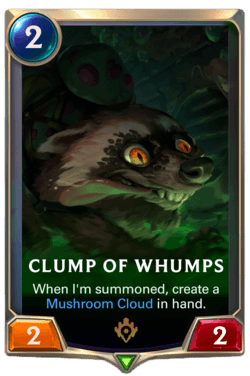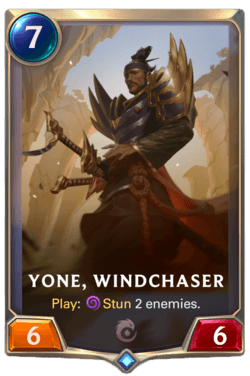On October 20th, 2019, I was able to visit LoL Park, a League of Legends esports venue and community area. Sunday was also the last day of the Legends of Runeterra pre-release first impressions event.
My main aim was one of the free goodies they gave out during the event: Legends of Runeterra physical card packs. @arteapot (artist who did Crystal Quest, a webcomic that’s part of League’s community collaboration efforts) tweeted out that she wanted this even if she sold her organs out so I promised her to get a deck for an art commission.
But of course, I tried out Legends of Runeterra (I couldn’t get the deck if I didn’t try the game out). I wasn’t lucky enough to be a part of the 5-day limited beta participant but I did play through the tutorial. Here are my impressions after around 30 minutes of gameplay + what I know about the game as a whole. Keep in mind that I am in no way a card game expert; don’t take any of my opinions on specific rules seriously.
- My very first impression after seeing the trailer was “I haven’t seen a card game this pretty”. I can fully attest after playing the game: this is the prettiest card game I’ve seen so far. CCGs can be pretty boring for the eye partly because they are not physical. Yes, things like card sleeves and backs and shiny effects can still be there, but virtual cards lack one of the most crucial elements of trading cards: physicality. CCGs therefore must add in unique things that are unique to their platform to replace the satisfaction people get from physically owning cards: shiny visuals.
Sense of material ownership is one of the primary desires of the human condition and is therefore very hard to replace. I figure that is why virtual translation of originally physical things often feels a bit lacking compared to tangible ownership: that feel from a real book is different from an e-book or an audiobook (they have their own benefits, but when compared side to side, you can’t help but notice that tiny gap of 2% that’s lacking).
Legends of Runeterra not only uses pretty VFX and SFX, it also uses dynamic camera movement to convey a sense of depth in a 2.5D board. These are things like how Darius apprehends swings his axe then apprehends you to right in front of his face, or how Garen’s level up animation (his E, Judgement) lines up perfectly with his upgraded splash art.
- The two card games that I have played enough to actually know the rules are Hearthstone and Yu-Gi-Oh!, both of which are card games with distinct turns where multiple actions happen on one turn. At first, I was honestly a bit confused when I saw Runeterra’s turn system. I have never tried Artifact (could not see myself paying $20 to just try it twice before letting it sit) so I was doubly worried. Turns out it doesn’t feel too alien; after the first two tutorials, I got used to the general gameplay flow.
- Monetization model seems very promising. Booster packs are basically Gacha minus the RPG aspect of it; they are the OG micromonetization method. It was a bold step for Riot to remove it completely and replace it with wildcards and card dust; I am sure that this will remove the high skill and monetary floor for many beginner card players who just want to enjoy the game while also playing actually viable cards and not just vanilla mixed with some free legendaries. I wonder what will happen in the long term though; is this method really sustainable? The thrill of pseudo-gambling is one of the main driving factors of card games; it’s what makes players come back again and again. Without this thrill, having most cards unlockable at no additional charge, won’t there be a lot of players who unlock all cards? This, of course, won’t be much of a problem if Riot actually sticks consistently to their proposed release schedule, but will they be able to keep up with the high production value of the game, including massive VFX, SFX, card illustrations, writing and lore check, balance, and QA? I see Riot implementing expansion systems in the near future, possibly a set or a rule change or even a card ban or limit (just like how they shake up the game during midseason and preseason in League already).
- I also want to touch up on how certain extra
features actually makes Runeterra much more accessible than other CCGs.
Three small features that deserve more attention: Oracle’s Eye, spell mana, and
card reveal.
- Oracle’s eye lets the player visualize stack and chain and makes sure that the player doesn’t miss out on certain opportunities. From my limited knowledge about Magic, stack is a pretty hard mechanic to truly master; I still mess up on a combo on Hearthstone because I can’t math or don’t fully understand the chain system in Yu-Gi-Oh. Letting users take their time and think things out by visualizing them is an amazing feature that makes card interactions easier to follow and understand, lowering a significant barrier to entry for a lot of beginners. It’s also a neat accessibility feature for those who can’t follow every interaction happening on the board in real time.
- Spell mana is also an underappreciated feature as it eliminates the pressure to use up all the mana available every round. I know that in Hearthstone, not using all your mana when moves still remain is often not the best; Valeera swapping her brand new daggers out whenever mana is left seems obvious, but it is also inefficient and doesn’t serve much meaning in the long term. Spell mana actually gives an opportunity for players to think twice before they play a card now that maximum of three mana can be conserved up for spellcasting next turn; will you play that 6 mana follower this turn, or play a 4 mana instead so you can play that big spell that was sitting in your hand next turn? I saw some spell cards costing more than 10 mana; I hope to see more varieties of these types of spells as the game expands.
- Card reveal is a neat feature where cards that are revealed from enemy’s hand stays revealed for the opposing player. I think of this as a very neat accessibility feature; in Duel Links, I often struggle to remember every spell or monster card revealed from my opponent’s hand and sometimes their card text is too long for me to read them in 2 seconds time. Letting them stay revealed helps me to read them at my own pace, eliminating that unnecessary brain work of memorizing card effects and letting people go at their own pace.
- Finally, lore. There are a lot of little lore
pieces scattered around Legends of Runeterra. What’s exciting to me is
their presentation.
- We have the typical voice interactions between different cards, like Darius and Garen dissing each other on board. But we also get Teemo freaking out over poison mushrooms (called “puffcaps”) sold by the mushroom vender or Garen and Darius being bro bros and complimenting their shoulder armor (ahhhh).
- We also get lore within the gameplay itself, and I think this is top notch narrative design. Lucian, for instance, levels up when he sees four allies die on board or when Senna, his wife, dies. Leveling up causes him to wield dual pistols, just like League, and his double attack keyword reflects this.
- We also get a lot of flavor text, now a tradition for many card games. One thing that’s a huge improvement over Hearthstone is that flavor text and full illustration are always viewable, even in game; they no longer belong only in the deep vaults of card collections. UI also shows related cards with specific keywords, which, combined with Oracle’s Eye system, makes card interaction and planning much easier. Riot largely outsources their card splash art and only mentions the company name for the artist; I do wish that individual artists are credited though, at least in the card collection.
- Finally, we get cards that are independent but actually progress through the lore as the game goes on. Cithria, for example, is a canon League character who appeared in one of the short stories for Demacia; she has three cards, all of which are independent of one another, but shows her progression through the lore from a fresh recruit of the Dauntless Vanguard to a Demacian hero leading the charge. Lonely Poro’s splash art actually changes when another poro is present on the board; it is also a modified version of the splash for Poro Herder, where the poro was left behind for winter and is lonely and sad. I’ll have a list of some of my favorite card interactions and progressions below.

Final Cithria card. She leads the charge now! 
We can see where Teemo gets his shrooms from. 
A clear confirmation that the Guile of Noxus is Leblanc. 
Flavor text says “Noxus has no room for… for weakn–Will someone get this DAMNED THING OFF ME?!” – Darius
Shows Darius’s softer side.
One of the very few closer looks at the Frozen Watchers. 
It’s good that the game stands independent of League– can bring back canonically dead/past characters.
Legend of Runeterra has some amazing potential to really mix up and bring fresh air to the standard CCG formula. As micromonetization schemes get more and more negative attention, Riot boldly getting rid of them is a fascinating move. Attention-capturing VFX and fascinating lore make the seemingly basic formula much more interesting to dabble with, and small but meaningful gameplay features and design choices make the game stand out from the crowd. I can’t wait for the potential that this game holds.
